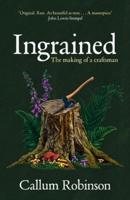Publisher's Synopsis
Collecting gemstones is a fascinating hobby that combines elements of geology, history, craftsmanship, and even metaphysics. Whether you're interested in raw mineral specimens, cut and polished gems, or rare and valuable stones, there's a lot to explore. Here's a comprehensive guide to getting started with gemstone collecting:
1. Understanding Gemstones
Types of Gemstones
Gemstones are broadly categorized into precious and semi-precious stones:
- Precious gemstones: Diamond, Ruby, Sapphire, and Emerald.
- Semi-precious gemstones: Amethyst, Topaz, Garnet, Opal, Aquamarine, Tourmaline, Peridot, and many others.
There are also organic gems (not true minerals) such as Amber, Pearl, and Jet.
Formation and Sources- Gemstones form deep within the Earth under heat and pressure.
- Some come from igneous rocks (e.g., diamonds in kimberlite), metamorphic rocks (e.g., garnets in schist), or sedimentary rocks (e.g., opals from silica-rich environments).
- Major sources include Myanmar (rubies), Colombia (emeralds), Sri Lanka (sapphires), and Brazil (various gems).
2. How to Start Collecting
Deciding on a Focus
- Raw vs. Cut Gems: Some collectors prefer uncut, natural specimens, while others seek faceted, polished stones.
- By Type or Variety: Some specialize in quartz variants (amethyst, citrine), while others collect only rare gems.
- By Origin: Some collect stones from specific countries or mines.
- Rock and gem shows (e.g., Tucson Gem Show, Denver Gem Show).
- Online marketplaces (Etsy, eBay, specialist gem dealers).
- Gem mining and prospecting (e.g., digging for opals in Australia or sapphires in Montana).
- Local rock shops and jewelry stores.
3. Identifying and Valuing Gemstones
Identification Factors
- Color: The most noticeable feature, but variations exist within each gemstone type.
- Clarity: The presence of inclusions can affect value.
- Cut: A well-cut gem enhances brilliance and appeal.
- Carat weight: Heavier gems are generally more valuable.
- Hardness: Measured on the Mohs Scale (Diamond = 10, Quartz = 7, Talc = 1).
- Luster: The way a gem reflects light (e.g., adamantine, vitreous, silky).
- Magnification: Checking for inclusions with a jeweler's loupe.
- Hardness test: Using the Mohs scale.
- Refractive index: Measuring how light bends inside the stone.
- UV fluorescence: Some gems glow under ultraviolet light.
- Density and Specific Gravity: Determining weight-to-volume ratio.
4. Caring for Your Collection
- Storage: Keep gemstones in separate soft pouches or display cases to prevent scratches.
- Cleaning: Use mild soap and a soft brush for most gems; avoid chemicals on porous stones like opals.
- Handling: Wash hands before touching porous gems like pearls and opals, as oils can damage them.
5. Rare and Valuable Gemstones
Some of the most sought-after gems include:
- Alexandrite: Changes color from green to red.
- Paraiba Tourmaline: Electric blue, highly valuable.
- Benitoite: Rare, bright blue, found mainly in California.
- Tanzanite: Unique blue-purple found only in Tanzania.
- Red Beryl (Bixbite): Extremely rare and valuable.










